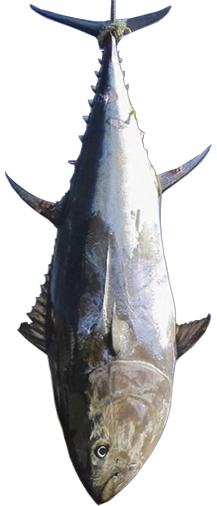SOUTHERN BLUEFIN TUNA
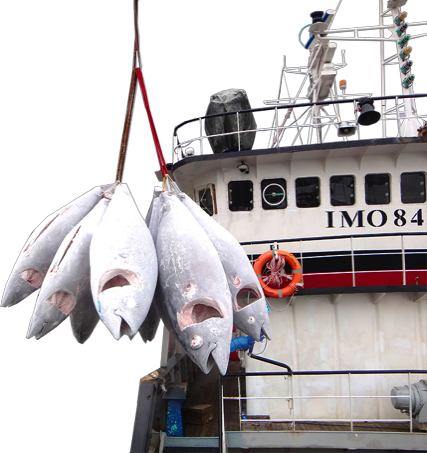
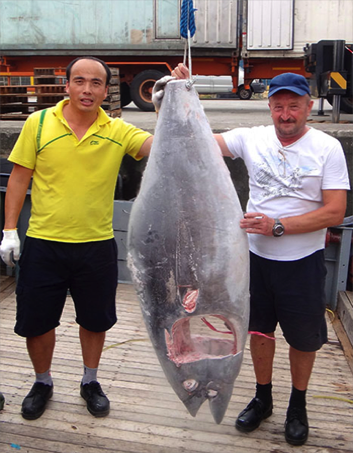
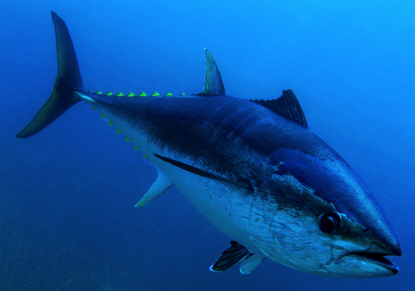
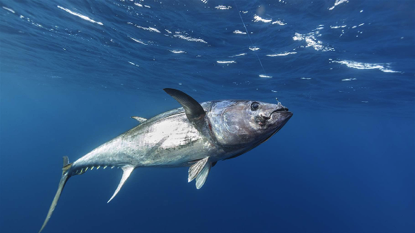
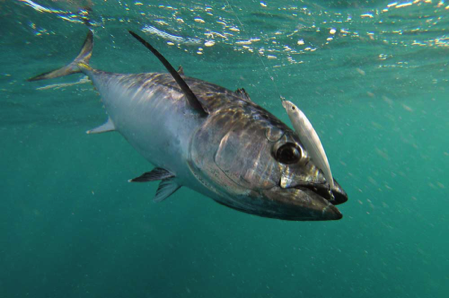
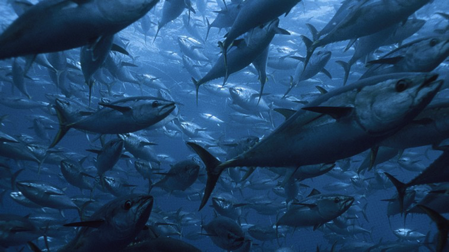
SOUTHERN BLUEFIN TUNA - (Thunnus maccoyii)
Scientific Name: Thunnus maccoyii
Market Name: Tuna
Common Name: Southern Bluefin tuna, Bluefin, SBT, Giant Bluefin, Oma maguro
Japanese Name: Honmaguro
Description
Southern bluefin tuna (SBT) are large, fast swimming, pelagic fish (ie. living in the open seas). SBT are found throughout the southern hemisphere mainly in waters between 30 and 50 degrees south. They are a pelagic species that can be found to depths of 500 metres. Southern bluefin tuna tend to school by size, and form large surface schools at certain times of the year. The only known breeding area is in the Indian Ocean, south-east of Java, Indonesia.
SBT can live for up to forty years, reach a weight of over 200 kilograms, and measure more than 2 metres in length.
The bluefin tuna is the largest of the commercially harvested tuna species. This fast-swimming migratory species occupies temperate and tropical waters worldwide. Bluefin is caught by a variety of gear types, including purse seine, longline, handline, rod and reel.
Southern bluefin tuna have torpedo-shaped bodies with blackish-blue backs, and a silvery-white belly with alternating rows of clear dots and lines. The anal fin and finlets are yellow edged with black. The first dorsal fin has a yellow or blueish hue.
Description cont...
The Giant Bluefin has a blue-black upper body and silvery white colouring on the sides and belly. The finlets are edged in black. Despite its potential large size, commercially caught bluefins are usually between 20 and 60 kilo.
Southern Bluefin are very valuable and their primary market is the Japanese Sashimi market. Because of the high fat content of SBT flesh, premium prices can be obtained in the Japanese market. The landed market value of the SBT fishery is estimated to be about 320 million.
Except for the catch by Australian fishers, the main method used for catching SBT is longline fishing. This method involves using long lengths of fishing line with many hooks. The SBT caught are mainly frozen at very low temperatures (-60C) and either unloaded at intermediate ports and shipped to markets in Japan or unloaded directly at markets in Japan.
Description cont...
The Australian component of the fishery mainly uses the purse seine method. This is a net that encloses a school of fish. However, rather than landing the fish, the fish are towed to waters near the Australian mainland and placed in floating cages anchored to the ocean floor. The tuna are then fattened for several months and sold direct to Japanese markets as frozen or chilled fish.
Habitat
SBT are migratory fish, crossing the Pacific, Atlantic and Indian Ocean within their annual migration. As a result, their habitat that ranges widely across the southern hemisphere including territorial seas of Australia, New Zealand and South Africa.
Southern Bluefin Tuna are generally long lived, with some fish living greater than 40 years. At maturity SBT can be up to 2 metres in length and weigh greater than 200kg. The age of maturity is a matter of debate; however, is generally agreed to be between 8 and 12 years of age.
Every year between September and April, adult SBT (aged 11-12 years) migrate from southern feeding areas to their single identified spawning ground in the waters south of Indonesia. It is not known whether all mature fish spawn every year, every few years or only once in their lifetime. The larvae and juvenile fish are swept south by the Leeuwin current along the Western Australian coastline, and reach the Great Australian Bight as 1 to 2 year olds. At this point, depending on a range of factors SBT either push west into the Indian Ocean or east into the Great Australian Bight.
Conservation and Management
Australia is a member of the Commission for the Conservation of Southern Bluefin Tuna (CCSBT), which is responsible for the international management of the global Southern Bluefin Tuna stock.
Southern Bluefin Tuna (SBT) were heavily fished in the past, with the annual catch reaching 80,000 tonnes in the early 1960s. Heavy fishing resulted in a significant decline in the numbers of mature fish and the annual catch began to fall rapidly.
In the mid 1980s it became apparent that the SBT stock was at a level where management and conservation was required. There was a need for a mechanism to limit catches. The main nations fishing SBT at the time, Australia, Japan and New Zealand, began to apply strict quotas to their fishing fleets from 1985 as a management and conservation measure to enable the SBT stocks to rebuild.
On 20 May 1994 the then existing voluntary management arrangement between Australia, Japan and New Zealand was formalised when the Convention for the Conservation of Southern Bluefin Tuna, which had been signed by the three countries in May 1993, came into force. The Convention created the Commission for the Conservation of Southern Bluefin Tuna (CCSBT). The CCSBT is headquartered in Canberra, Australia.
Total Allowable Catch
At its eighteenth annual meeting in 2011, the CCSBT agreed that a Management Procedure (MP) would be used to guide the setting of the SBT global total allowable catch (TAC) to ensure that the SBT spawning stock biomass achieves the CCSBT’s rebuilding targets.
Under the adopted MPs, the TAC is set in three year periods. The TAC for 2014 was 12,449 tonnes, the TAC for 2015 to 2017 was 14,647 tonnes, the TAC for 2018 to 2020 was 17,647 tonnes and the TAC for 2021 to 2023 is also 17,647 tonnes.
The effective catch limits for Members and Cooperating Non-Members of the CCSBT from 2015 to 2023 is summarised below. In addition, some flexibility is provided to Members for limited carry-forward of unfished allocations between quota years. This flexibility is described in the Resolution on Limited Carry-forward of Unfished Annual Total Available Catch of Southern Bluefin Tuna.
Product Profile - eating
Bluefin is graded by taking “plugs” of flesh to test for fat content and colour, critical factors in the price structure.
Because of its high fat content, bluefin is especially prized as a raw product and is marketed as No. 1 “sashimi-grade,” with the freshest and fattiest, going to the Japanese market. The flavour is distinctive. The flesh has the firmness and appearance of beef steaks.
Nutrition Facts:
Calories: 144
Fat Calories: 44
Total Fat: 4.9 g
Saturated Fat: 1.3 g
Cholesterol: 38 mg
Sodium: 39 mg
Protein: 23.3 g
Omega 3: 1.3 g
PELAMIS BLUEFIN TUNA FRESH FROM THE SEA - SNAP FROZEN (-60'C) TO KNIFE TO TABLE
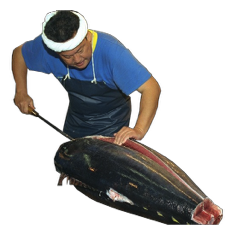
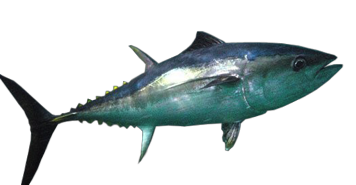
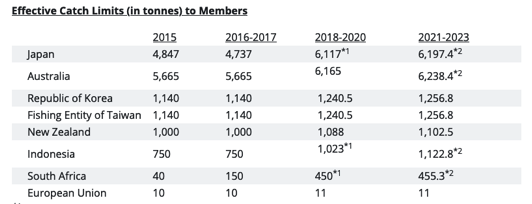
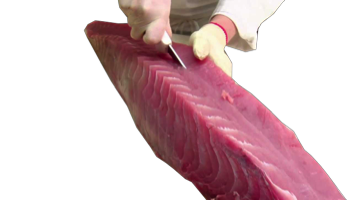
("Click" on menue item to view details)
("Click" on menue item to view details)



